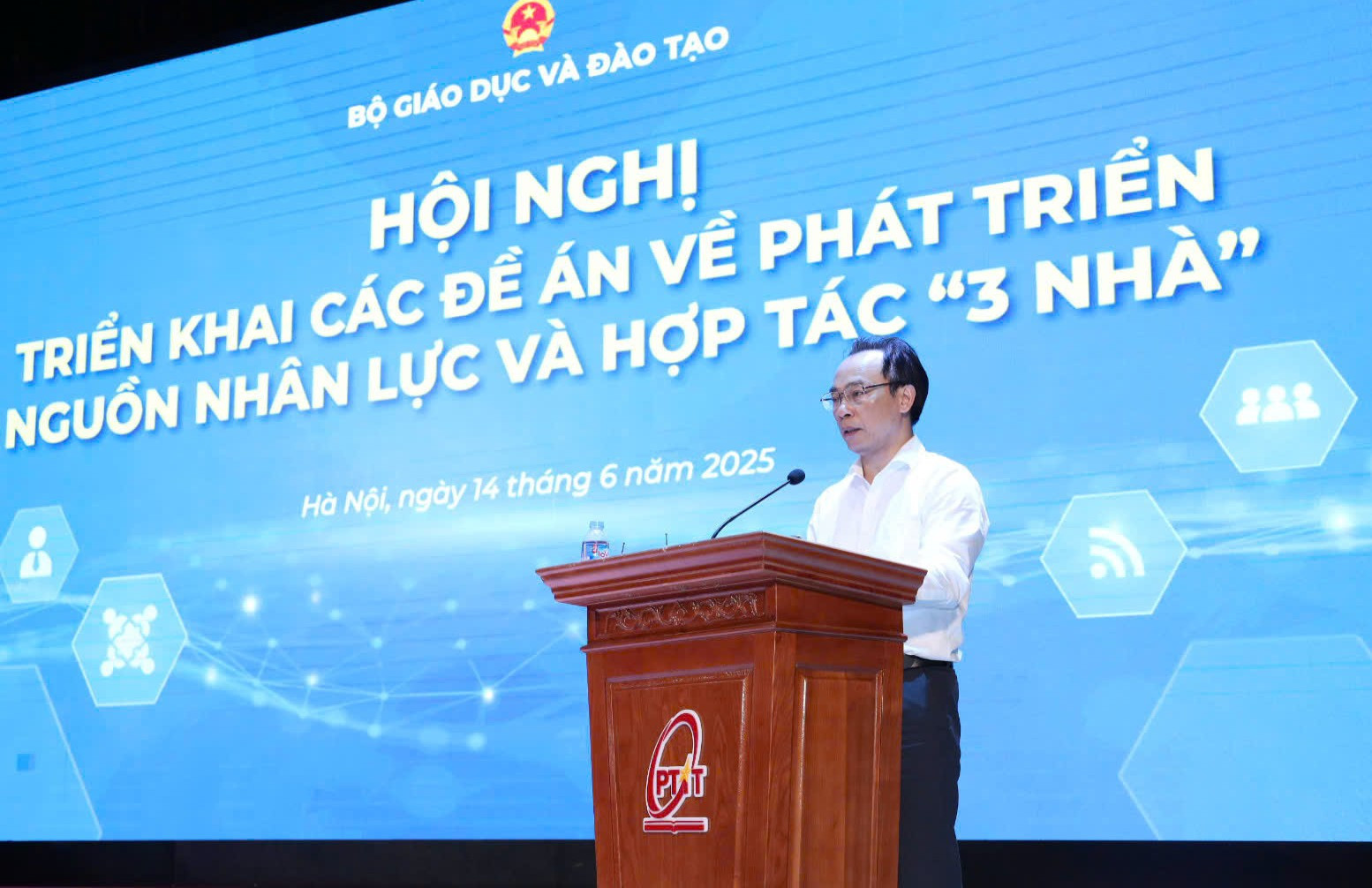
The news was announced on June 14 at a conference on human resource development projects and cooperation among the state, universities and enterprises.
This is a key task to implement the Prime Minister-approved plan for developing high-tech human resources in the 2025-2035 period, with a vision to 2045.
Dang Van Huan, Deputy Director of the Higher Education Department, said the ministry is formulating a comprehensive plan to execute the initiative, including the rollout of talent training programs.
In June 2025, MoET will establish and issue standards for the talent training program, alongside regulations for selecting programs and institutions for the training. In July 2025, the ministry will provide guidance for universities to implement these programs.
MOET Deputy Minister Hoang Minh Son noted that Vietnam won’t be able to develop science and technology and make breakthrough advancements in science, technology, and innovation if it doesn’t have high-quality, talented human resources.
STEM graduates can serve in various industries, including semiconductors, high-speed rail, and nuclear power.
“These fields not only require specialized human resources but also many STEM human resources,” Son explained. “Even when we need human resources to develop a certain industrial sector, we can easily retrain STEM graduates to be professionals in this sector. The training of high-tech human resources is extremely important as they can cover many fields.”
Asked about the criteria to choose universities for the talent training program, Son said only top-tier schools with high capabilities can participate in the programs.
‘Reputable training records will be selected through a competitive process. There will be 100 talent training programs for engineers and master’s degrees and 100 for biomedical fields, with priority on digital technology, AI, and biotechnology.
He said that MOET has set specific tasks to orient students to study STEM, which requires the participation of universities.
“When carrying out career guidance, we should advise students to study STEM majors. There is nothing more convincing in consulting than giving information about job opportunities, learning conditions, scholarship policies, and tuition fees of schools in addition to the general policies of the State,” Son said.
Deputy Minister Nguyen Van Phuc underscored the importance of the cooperation of all three parties – the government, schools, and businesses - to maximize resources, align training and research with labor market needs, and enhance national competitiveness.
Universities are not only places for training, but also centers for knowledge creation, scientific research and technology transfer, and need to be more closely linked with businesses, and invest more to meet practical and market needs.
Businesses are not only places that employ workers trained by schools, but also commercialize research results, and are the most important partners of schools.
“This relationship does not stop at human resource training, but needs to expand to research activities, application, technology transfer, commercialization of research products, and especially the formation of cooperation, joint ventures, partnerships, etc.,” said Phuc.
The plan for high-tech human resource development in 2025-2035 sets specific goals by 2030, including rapidly increasing the scale of training in STEM majors, especially in fundamental sciences, digital technology, AI, and biotechnology, in addition to other goals:
+ The proportion of people studying STEM majors will reach 35 percent at each training level, of which at least 2.5 percent will be in basic sciences and 18 percent in digital technology-related majors.
+ The number of people following engineer and master training programs will account for at least 10 percent and the number of people studying doctoral training programs will be at least 1 percent of total STEM training scale.
+ The number of people graduating from training programs on information and communication technology will be 80,000 people/year, of which at least 10 percent will be awarded engineer, master's or doctoral degrees.
+ The number of people graduating from specialized training programs in AI will be 8,000 people/year, of which at least 20 percent will be awarded engineer, master's or doctoral degrees; 100 percent of bachelor's, engineer's and master's training programs in STEM majors will be integrated with knowledge and skills in data analysis and AI.
+ The number of people graduating from specialized training programs in biology, biotechnology and biomedicine will be 5,000 people/year, of which at least 20 percent will be awarded engineering, master's or doctoral degrees.
Thanh Hung